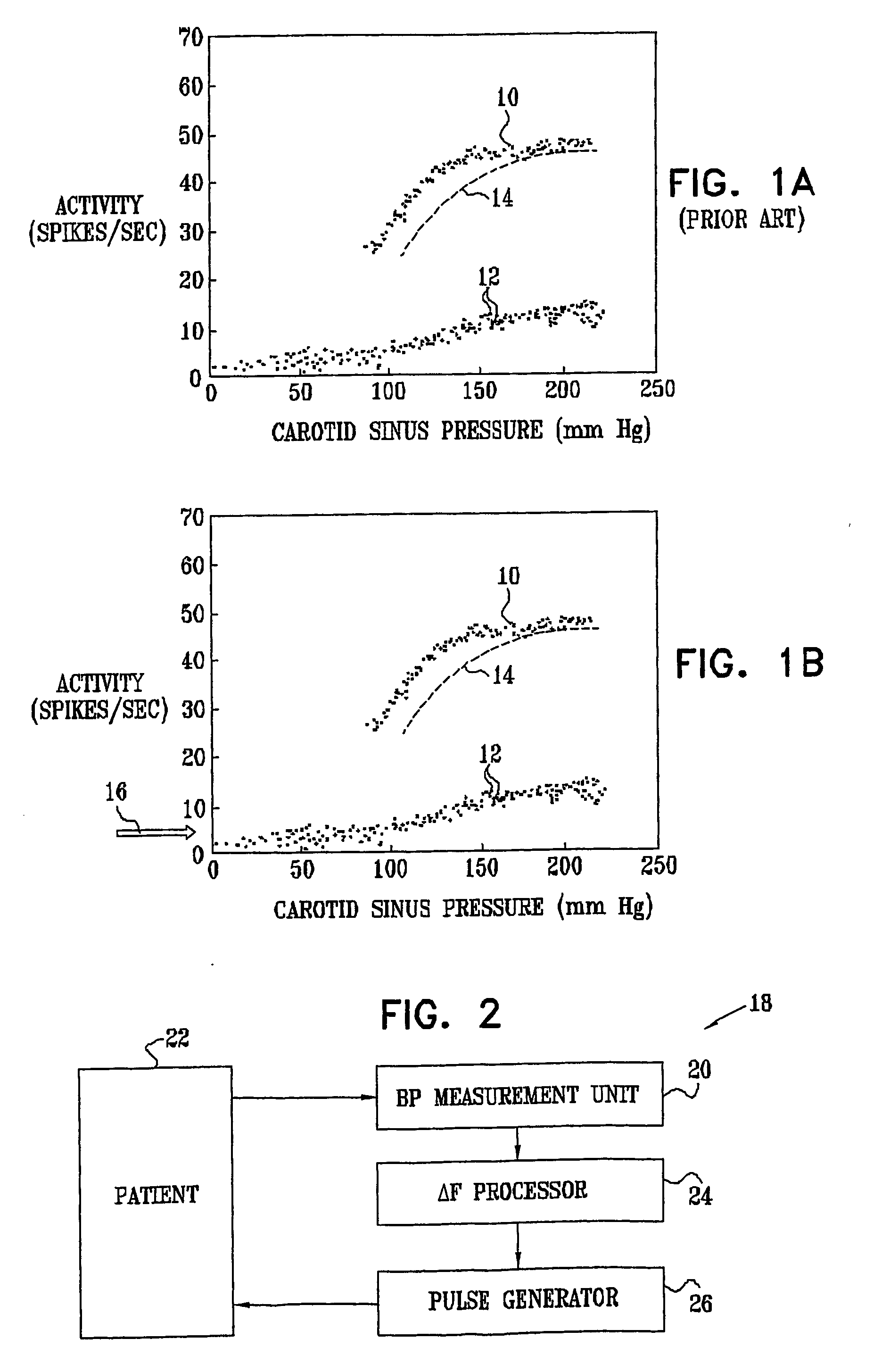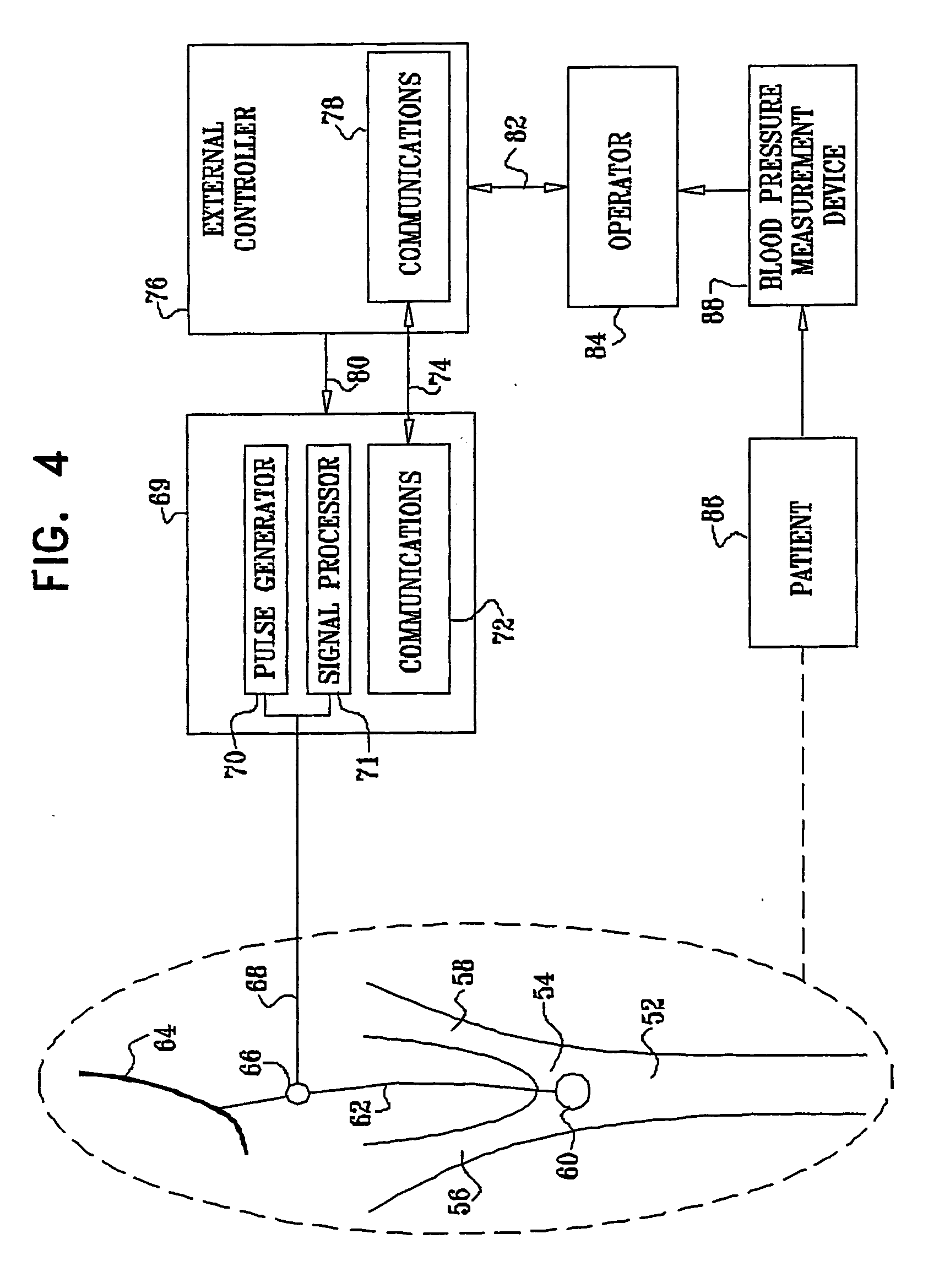Technique for blood pressure regulation
a technology of blood pressure and regulation, applied in the field of blood pressure regulation, can solve the problems of lowering cardiac output, increasing blood pressure, and reducing heart rate and force of contraction, so as to improve cardiac output, increase diastolic blood pressure, and enhance activity
- Summary
- Abstract
- Description
- Claims
- Application Information
AI Technical Summary
Benefits of technology
Problems solved by technology
Method used
Image
Examples
first embodiment
[0050] Reference is now made to FIGS. 1B and 2. FIG. 1B is a graph of recorded baroreceptor activity versus carotid sinus pressure, showing a level of signal application to facilitate blood pressure regulation, in accordance with a preferred embodiment of the present invention. FIG. 2 is a high level block diagram of an arrangement for blood pressure control, which is constructed and operative in accordance with a preferred embodiment of the invention. In an arrangement 18, a blood pressure measurement device 20 is connected to a patient 22. The blood pressure measurement device 20 can be a conventional arm-cuff sphygmomanometer, which intermittently provides input information. In stable situations, blood pressure information could be recorded relatively infrequently, e.g., daily or weekly, while in other patients, the measurement frequency could be higher, and may be adjusted. It is an advantage of this embodiment of the invention that autonomous automatic mechanical blood pressure...
second embodiment
[0066] Reference is now made to FIG. 6, which is a schematic and block diagram of an arrangement for controlling blood pressure, which is constructed and operative in accordance with an alternate embodiment of the invention. The embodiment of FIG. 6 shares certain features with the embodiment of FIG. 4, but is more advanced. Like elements in FIG. 4 and FIG. 6 are given like reference numerals.
[0067] Using an estimate of the patient's blood pressure, based on type II baroreceptor activity, an implanted device 100 dynamically and automatically adapts its stimulation pulse rate to the patient's tonic blood pressure level. This feature allows for essentially autonomous operation. The implanted device 100 monitors the neural activity on the carotid sinus baroreceptor nerve in order to evaluate tonic blood pressure. In addition to the stimulating electrode 66, a sampling electrode 102 is placed on the carotid sinus nerve 62, and is connected to the implanted device 100 by a lead 104. The...
PUM
 Login to View More
Login to View More Abstract
Description
Claims
Application Information
 Login to View More
Login to View More - R&D
- Intellectual Property
- Life Sciences
- Materials
- Tech Scout
- Unparalleled Data Quality
- Higher Quality Content
- 60% Fewer Hallucinations
Browse by: Latest US Patents, China's latest patents, Technical Efficacy Thesaurus, Application Domain, Technology Topic, Popular Technical Reports.
© 2025 PatSnap. All rights reserved.Legal|Privacy policy|Modern Slavery Act Transparency Statement|Sitemap|About US| Contact US: help@patsnap.com



